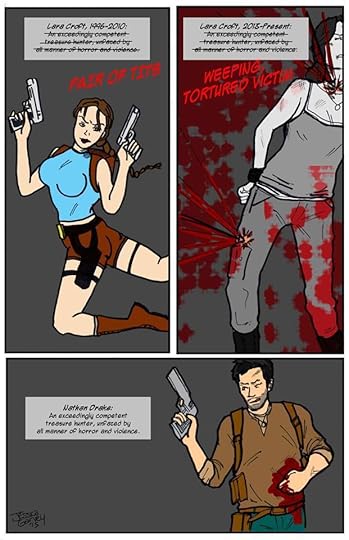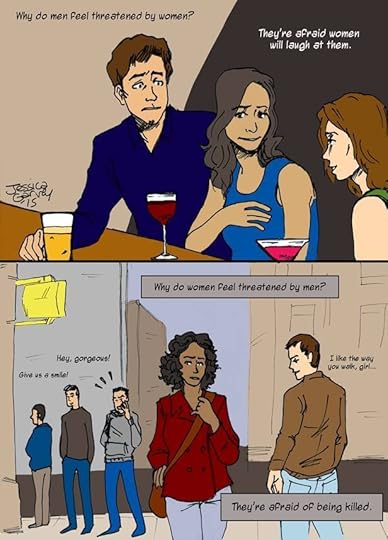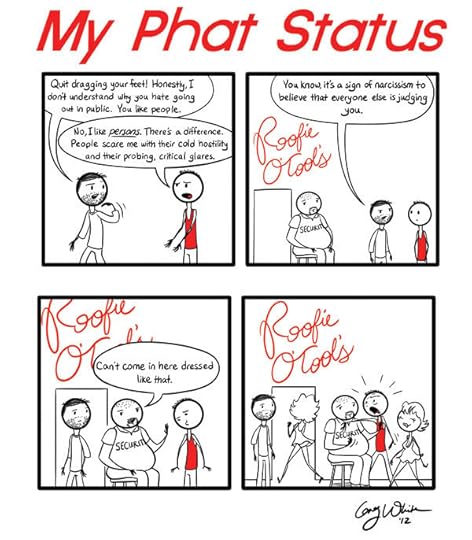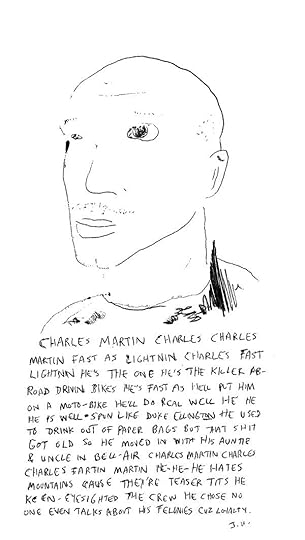Charles Martin's Blog, page 21
February 13, 2015
Intent to Deceive
Intent to Deceive
February 14 through May 10
Oklahoma City Museum of Art
OKCMOA.com
Colette Loll is a cultural heritage crime fighter. The curator of OKCMOA’s Intent to Deceive is also the founder of Art Fraud Insights, an agency that works with the FBI to target forgeries infesting the marketplace and museums across the country. She wields an extensive knowledge of art history, a keen eye, and a ray gun that can distinguish, in seconds, the elemental composition of a painting, allowing her to compare potential forgeries to legitimate works by classical masters.
An Agent Scully of the art world.
As Loll led media through a preview of the exhibit, she spoke with a mix of disdain and respect for the five notorious fraudsters who star in the collection. It was difficult to not empathize with the frustration and cynicism of these painters who turned to fraud so they could finally make a living off their talent, the one thing that truly made them special.
I am still left with the thought that, with billions of dollars expended on art sales throughout the world, why aren’t more artists getting in on the action? Let’s break it down.
The Creators—There are artists with talent. Within that vast group, there are artists with talent and vision. And within this still fairly large group, there are artists with talent and vision and drive. And within that much smaller group, there are artists with talent and vision and drive and connections and/or luck. This final, micro-sized group is where the success is found, take or leave the talent factor. A tiny subset of the whole which achieves the recognition that is the dream of every creative soul that picks up a paint brush.
So for the artists that have talent and drive and connections, but no vision, what is left to them but fraud? Painting is what they love to do, so why not make some(read: lots of) money while doing it?
The Buyers—Collectors, museum curators, and dealers all fall victim to the classic tragedy of art appreciation: Genius is abundant, but the ability to recognize genius is rare. Each of these aficionados of the art world dream of unearthing a brilliant work, sifting through mountains of trash to find the diamond so many others overlooked. These finds fill their wallets and define their careers, proving that they are among that micro-minority of their profession that can recognize the true value of art.
They want to believe and there is no more willing fool than the faithful.
The Industry—Art is a product that has no true practical value. It serves no utilitarian purpose, yet a single painting can sell for more than a house, perhaps an entire neighborhood of houses if the provenance is right.
Art has value only because someone has assigned it value. If he/she can convince another of that value, then it can be sold for profit, though its first function is to be visually pleasing, its second function is to be old, and it’s third and most important function is to be exclusive. The pinnacle of all luxury items.
So, if you have the ability to trick your way into this grossly over-inflated market, how do you not take a shot? Why doesn’t every artist with the technical skill to create frauds not grab at the ridiculous money flowing through the art world?
Because art’s primary function is communication of soul. That is how we recognize genius, that is what elevates a craft into an art form, the merging of unique expression with technical prowess to create something almost alien to the rest of human experience: true inspiration. Inspiration touches us all at some point in our lives, a moment when our entire worldview comes into sharp focus, an incredible experience a million times more fleeting than love. Inspiration can uplift the downtrodden, alter entire industries, or drive poets mad trying to recapture that vivid clarity.
To witness a perfect creation is like gazing at a distant world, sensing that we are only seeing a sliver of the expansive emotion that brought this work into being. A visual representation of the immensity of pure inspiration.
These fraudsters, impressive as they might be, are not artists, they are craftsmen. Their function is only replication, devices of our age that will some day be replaced by machines. OKCMOA’s exhibit is a wonderfully deep exploration into this fascinating profession, but more than that, a chance to challenge one’s own perception of the true nature of art.
February 12, 2015
Lara Croft
February 11, 2015
From Aeon Magazine—Welcome to Earth: Population 500 Million
I thought this was too incredible not to share:
I stare out the window from my tiny flat on the 300th floor, hermetically sealed in a soaring, climate-controlled high-rise, honeycombed with hundreds of dwellings just like mine, and survey the breathtaking vistas from my lofty perch more than half a mile above ground: the craftsman cottages with their well-tended lawns, the emerald green golf courses, the sun-washed aquamarine swimming pools and the multimillion-dollar mansions that hug the sweeping sands from Malibu to Palos Verdes. These images evoke feelings of deep nostalgia for a Los Angeles that doesn’t exist anymore, back in the halcyon days before my great-grandparents were born, when procreation wasn’t strictly regulated and billions of people roamed freely on Earth.
There are only about 500 million of us left, after the convulsive transformations caused by climate change severely diminished the planet’s carrying capacity, which is the maximum population size that the environment can sustain. Most of us now live in what the British scientist James Lovelock has called ‘lifeboats’ at the far reaches of the northern hemisphere, in places that were once Canada, China, Russia and the Scandinavian countries, shoehorned into cities created virtually overnight to accommodate the millions of desperate refugees where the climate remains marginally tolerable. READ MORE!
February 10, 2015
Choose Your Own Adventure!!!
Choose Your Own Adventure books were my favorite format for storytelling when I was a kid. I read them obsessively, retracing my steps at least a dozen ways to ensure I took every story thread possible. Though the stories weren’t often as compelling as traditional chapter books, the flexibility of the story dazzled me. The chance to engage with the writer, even if just in pre-ordained ways, was irresistible.
So, a few years ago, I started doing Choose Your Own Adventure commissions for $20 at conventions, mostly as a joke. They became surprisingly successful, but cumbersome since I didn’t have time to talk to convention-goers and pitch our product when my head was ducked over a notebook. I’ve decided to move the operation online and do the commissions via email so I have time to do them properly. The rules are simple:
1. Give me the name(s) you want to use,
2. Give me the scenario,
3. Please no trademarked characters,
4. Let me know if I can post the story online or in a print anthology (“no” is an acceptable answer),
5. Agree on the price and give me your money.
The standard is five rounds. I write a chapter and give you two paths for the story to take. You choose where the adventure goes from there. If you want more rounds, then we can negotiate a price(just know I will probably up the price because these things are time-consuming and charting out a longer story with dozens of different story threads is difficult). The going rate for a full story is only $20(though I reserve the right to set the price higher based on demand or customer specifications). If you want a cover for the story, we can accommodate with something produced by one of our fabulous artists at a modest price that will be negotiated with the artist himself. A printed copy can also be arranged for a small set up and printing fee.
No refunds and I reserve the right to turn down a story if I don’t believe I am capable of doing it justice. So, a sprawling 200 chapter fantasy epic is probably not going to work for me. Probably. I will do the stories in the order they are received. There are no redoes. Once a chapter is written, it is written. Rush projects will cost more. Also, nothing overtly sexual. This is meant to be fun, not creepy and disturbing. Turnaround will depend on demand since each story is produced from scratch based on customer specifications. If I have twenty stories in line, it’ll take me a while to get to yours, so be patient. I normally write one chapter a day, so five days to finish a commission on average, assuming I get an immediate response. Email me with questions or pitches to charlesjmartin20 AT gmail.com, on Facebook, or on Twitter. Proceeds from the Choose Your Own Adventure commissions will go to funding the growth of Literati, so a fun time and a good cause!
February 6, 2015
Why Do Men Feel Threatened By Women?
My Phat Status: Roofie O’Tool’s 1
February 5, 2015
Natasha Alterici, the Future of Oklahoma Comics.
6-9 pm Friday, February 6
Planet Dorshak
3003A Paseo in OKC
Oklahoma comics are surging right now with exciting titles popping up every year and audiences starting to take notice of our vital and energized scene. Young, ambitious, and innovative, the comic creator culture is changing the perception of our state within the region and the rest of the nation will surely follow. Of the rising talents, Natasha Alterici is perhaps the most telling of how far illustrated storytelling has come as a legitimate art form rather than just a distraction for children.
Alterici is a trained traditional artist who blended fantasy and kinetic impressionism to develop a unique style that began in the fine art realm, but veered into the comics after Art Speigelman’s Maus changed her perception of narrative art. She’s since worked on several projects including Illustrated Girl , Lucid , and even authored a short comic for our Literati Presents series. Each work features her jittery and tense style perfect for establishing suspense. By avoiding traditional comic book art with a thousand points of Photoshop lights and impossibly muscled and curved figures, Alterici is helping to legitimize comics as more than a niche market, but a viable art medium.
A new body of work entitled “False Grit” will be on display throughout the month of February at Planet Dorshak in OKC.
“It is a play off the old western classic True Grit,” Alterici explained in an email. “Sort of a disillusioned exploration of the American Southwest. The wide open spaces and the pioneer spirit, stripped of its romance, shown without the veil of nobility. Humans stubbornly fighting against nature, destroying it, altering it, evolving from it, surviving it all the same.”
She will also be debuting the first issue of Heathen on Friday. Based in Norse mythology, Heathen uses very modern themes in the tale of a warrior refusing to be defined by the past.
“The story follows a young viking woman on a mission to take down the legendary Norse gods, in order to make a better world,” Alterici said. “It draws a lot from Norse mythology, incorporating new characters into the world. There are plenty of interesting characters, both human and nonhuman.”
Despite her success, Alterici isn’t committing fully to comics, but will continue to pursue art in whatever direction it takes her.
“An idealist at heart, I like to believe I won’t have to choose between one path or another,” Alterici said. “That’s why I’ve never settled on any one particular medium, painting or drawing or digital work. There are benefits and setbacks to all, and projects that each are best suited for. Sometimes an idea is satisfied with a few sketches, sometimes it needs an oil painting to explore, and occasionally it needs a full graphic novel with complex characters and discussions and visual metaphors. I choose not to limit myself, or allow any one else’s idea of what an art career should look like to limit me either.”
To purchase Heathen online, visit our Storenvy account. To view more of Alterici’s work, visit www.alterici.com.
February 4, 2015
Charles
February 3, 2015
Behold! We Present Heathen!
Buy the debut of Natasha Alterici’s Heathen today at Storenvy or at the launch party at Planet Dorshak during the first Friday art walk in the Paseo. Only $5!
Though set in the age of Vikings, Heathen tells a myth relevant to our own culture. Our hero struggles with finding bravery, purpose, identity, wisdom, and love—as all great heroes do. But the hero of this epic quest is a woman. Her struggle is further complicated by patriarchal ideologies and attempts by men to control her, just as it is for women of today.
- Kristen Henson
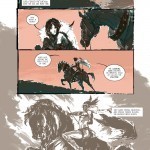
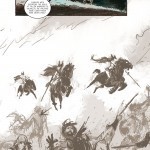
Welcome to the Dungeon: BDSM Underground in the Bible Belt
There are few things that will make me instantly want to throw up, but blood cupping, I learned, is one of them. I swallowed down the acid pooling at the back of my throat and listened as a lanky, shirtless and dangerously blissful Hippie-man-child informed me how safe he was being with his bottom. He didn’t mean bottom as in his ass but the young woman stretched out on the medical table in full view of a few dozen spectators. He was her top, her Dominate*, and she was his bottom, his submissive, and these demonstrations of power exchange were called “scenes.”
The Fifty Shades of Grey book crossed my mind, how that novel’s world seemed suddenly vanilla (aka tame) compared to this much darker reality as the Hippie-man-child’s scalpel pierced the young woman’s back, the careful crosses he lovingly etched into her milky skin seeping blood. He covered each incision with a fire cup, an alternative medical practice used to promote blood circulation and healing dating back to the ancient Egyptians. After a few minutes, the Dominant removed the containers as if he was opening a Christmas present, the glee brightening his eyes, his joy palpable. I didn’t know why he was so damn happy until he pressed his gloved hands onto the woman’s back, making O’s in the blood the same way my toddler son finger paints.
The young guy was into hematolagnia, a blood fetish. My throat closed again, my mouth-watering painfully to the point where all I could do was murmur, “Wow. You’re really doing that.” My husband seemed to be thinking the same thing when I glanced at him. How did we end up here?
In a dungeon.
It’s actually pretty simple. Some friends told us about a party they attended through their friend at Oklahoma Power Exchange (OPE)**, known in the local fetish community to be one of the state’s largest play dungeons catering to people from oil executives and blue-collar workers to stay-at-home moms. What was described to us sounded like a circus side show—people bound and flogged to the point of bleeding, others with needles being driven under their skin into elaborate designs, and some toted around on leashes like animals.
In other words: WTF and how do we get in?
Let’s just say it was a process to be admitted, for both our safety and the privacy of OPE. The members-only club boasts nearly 1,000 members on FetLife, a sort of Facebook for kinky folks. Once we arrived at our first party, there were more disclosures and forms to sign before we were allowed into the actual dungeon space.
I’m not sure what I expected a dungeon to look like—maybe cold, damp stones and heavy metal shackles. OPE was not that in the least. It was…tasteful. Tasteful with a huge St. Andrew’s Cross as the centerpiece. Not in a million years did I ever picture myself strapped on that X-cross as I watched a Domme, a female Dominant, go to town on a woman with an Indiana Jones style whip. By the end of the night, I changed my mind.
When people hear the phrase “BDSM” (bondage, discipline, sadism and masochism), many ideas come to mind. Fifty Shades of Grey could be one, innocent “mommy porn” as some call it, or BDSM can evoke stories of sexual violence like that of former CBC host Jian Ghomeshi. Before his dismissal from the Canadian network, Ghomeshi publically denied instigating any non-consensual violent sex as alleged by several women. Instead, he proposed he was fired for his lifestyle choice: BDSM.
Whether or not the allegations are true for Ghomeshi, fear of being fired from a workplace is one of the many reasons why the BDSM culture has stayed underground, or at least in the safe shadows of pop culture’s dumbed down literary and film versions.
Misconceptions about the lifestyle are at both ends, for Dominants, those who take the active or controlling role, and submissives, those on the receiving end:
BDSM equals pain. I’m not going to lie and say there’s no pain involved. However, the degree of pain or intense sensation is discussed and agreed upon prior to any activity between partners. As Psychology Today points out, it’s all about trust and communication, something even the best of relationships can lack. Accidents or injuries rarely happen in the lifestyle because limits are established up front.
Submissives are weak. There is nothing feeble about being a submissive because the submissive always has the control. Ever hear of a safe word? Dr. Laura Berman, popular from her Oprah and Dr. Oz guest appearances, explains, “Being dominated and out of control can feel very sexy, especially if you are someone who is typically in control and juggling many responsibilities at once.” And this applies to both men and women and has nothing to do with their level of self-esteem. Would a judge who loves getting spanked be a less effective worker? No, but that doesn’t prevent employers from enforcing morality clauses to fire workers.
BDSM always involves sex. To agree with Psychology Today , people tend to confuse intimacy with sex. There are likely more Dominants in the lifestyle willing to beat the shit out of people than bang them, but there is always intimacy between partners, whether they’re in a committed, monogamous relationship (yes, that does exist in the BDSM world) or just play partners for one scene.
BDSM encourages sexual violence. Simply put, BDSM is NOT consensual domestic violence. Most power exchanges between a Dominant and a submissive are psychological, not physical. This is not to say there aren’t sick puppies out in the world giving true Dominant/submissive relationships a bad name by preying on unsuspecting people. And this truth has led to some extreme legislation, such as the recent amendment made to the UK’s Communications Act, effectively banning a list of sex acts in pornographic content produced and sold in the country as a means to prevent sex crimes. The acts include spanking beyond a gentle level, full bondage and restraint (all four limbs restrained), and, most disturbing, female ejaculation but not male ejaculation.
Dominants are abusers. No one who knows my mild, laidback husband would call him an abuser. Because he’s not. As Kinkly , a popular website for all things kink, says, real Dominants have to be responsible, patient, self-confident, and use self-control. Any supposed Dominant who immediately asks for sex or ignores a submissive’s limits is a huge red flag.
The biggest misconception I had before being involved in this lifestyle was that everyone was abused as a child. According to a psychological study done by the School of Public Health and Community Medicine in New South Wales, Australia, “BDSM is simply a sexual interest or subculture attractive to a minority, and for most participants not a pathological symptom of past abuse or difficulty with ‘normal’ sex.” More so, Pandora’s Project, a support and resources website for survivors of rape and sexual abuse, discusses BDSM as a way for survivors to heal by giving them back the consensual control in a relationship.
I thought of that word—consensual—often as I watched Hippie-man-child assist his now bloody submissive from “sub-drop,” a common occurrence when a submissive experiences a drop in temperature or feeling of deep exhaustion after “playing.” Then the Dominant thoroughly disinfected his space and moved on to the next person, a young man clearly excited about having his first blood cupping. And he wasn’t the only one excited.
I knew then, that first night at the OPE play space with my husband, we weren’t alone. BDSM writer and speaker Jay Wiseman once said, “A pervert is anybody kinkier than you are.” Here we stood, on a dungeon floor surrounded by people far kinkier, and we didn’t need to hide a part of ourselves any longer like we did with family, friends, and coworkers. We were ready to learn more from this new world. We were free. In the middle of the Bible Belt, but free.
*Dominant is always capitalized while submissive remains lowercase as a sign of respect, as is commonplace in the BDSM lifestyle.
**OPE name used with permission of the owners.

